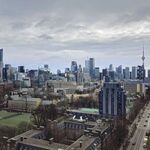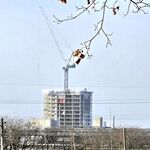This is related to low-floor streetcar conversion. Even without the route split, the headway would have been widened. In fact, there are more LF's designated to King than originally budgeted due to increased ridership in the corridor. You are correct, however, that widening the headways means that the service needs to make it to the ends. This was part of the rationale for the split was to improve reliability, but there are obviously challenges with the brand new schedule that are being monitored, analyzed, and changes made as soon as possible.
The capacity on Broadview is now less than it was when it was all CLRV back in 2014. Don't forget that Broadview (and Roncesvalles) service was also cut a lot back in 2016 when 514 was first introduced. And that ignores how many of those CLRVs were actually ALRVs back then.
Back in the 2000s, we were told that there wouldn't be such extensive service cuts accompanying conversion to longer streetcar. And weren't we also told that there'd be a Broadview station to Distillery loop (Cherry loop back then) service if there were big reductions to 504 service on Broadview?
The tracks on Broadview north of Gerrard will be reconstructed in two or three years and at this point, station modifications can also be made at the same time. A short-term solution is being investigated.
Good to hear they are finally thinking about this. But personally, I started to point the capacity issue at Broadview out to TTC back in 2010 - I can't comprehend how it wasn't done already.
I'm not sure how you do anything short-term, without blocking 505 cars from entering. Though perhaps if the second car stopped and didn't use the rear doors, moving the walkway to 505.
In the long-term, you'd rebuild the loop, to move the junction onto Erindale, making room for 3 cars. Perhaps even remove cars from Erindale. Ideally reverse the loop direction as well, so that cars board near the subway entrances instead of 50 metres down the platform.
Also not true. In many cases, driving time was reduced but the reduced time was reallocated to recovery. This was to reduce slow operation mid-route. Adjustments are being made based on data being collected since the route change.
There's a lot more cars showing as running late. All I see is the average speeds are listed as higher in the service summary, for both legs, than the entire route used to be. Perhaps something is wrong somewhere.
There are challenges. It's recognized. It's being monitored. But in the big picture, it's been only a month since a brand new schedule and a brand new structure was put in place. Reacting quickly, without adequate data, may not yield positive results.
I'd think quickly adding some spare buses to run to Church and fill in frequent large gaps, wouldn't be to difficult.
Instead, what I'm seeing is more short-turns - which only reduces service on Broadview - but at least gives me something to look at walking down Parliament.
On the bright side, I'm getting more exercise. Through frustrating today in the pouring rain, when I didn't want to walk a mile. Even with a streetcar sitting at Broadview station today "6 minutes away" as I got off at Gerrard Street, 10 minutes passed before it arrived around 10:30 AM. I hadn't just missed one either! At least a 12-minute gap.
The massive service cut of mid-day frequency from the 3.75 minutes (in March 2014, before large-scale bustitution and the 514) to 7 minutes today seems to be too aggressive. And not what we lead to believe.




